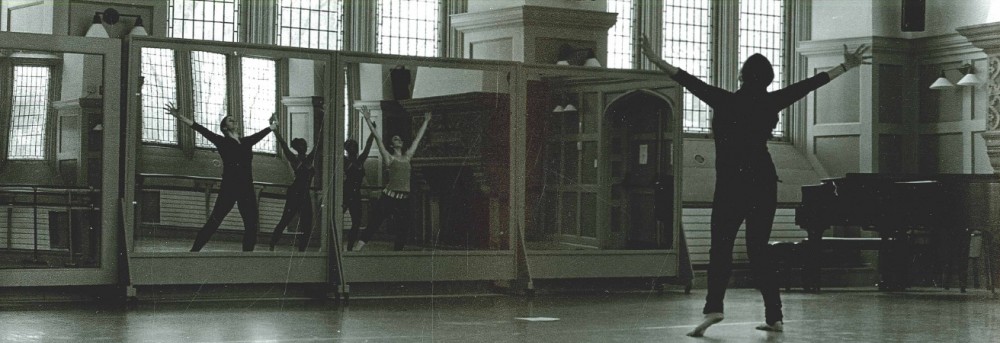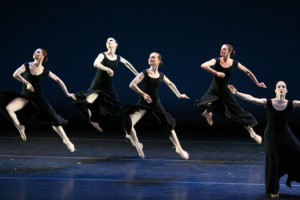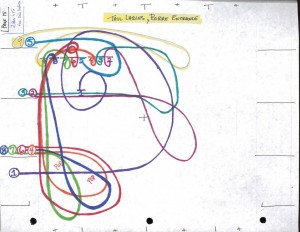As I reflect further on last week’s rehearsal – the first we’ve had in the auditorium of Goodhart Hall – I realize that the beauty of the “wholeness” I appreciated in watching Steps in the Street performed on the stage was derived in part from my experience of the rhythms and patterns of the work in this new, elevated (both literally and figuratively) context.
Over the course of the day the dancers rehearsed the piece in its entirety with the music many times, becoming more closely acquainted with the mixed meters of Wallingford Riegger’s modernist composition. Because the form of the musical score makes counting each measure more complicated the dancers have learned to rely at times on the sound of each other’s steps to cue transitions in movement (as opposed to the beat of the music), so an entrance may fluidly follow the preceding exit. The way the dancers have made adjustments together, as an ensemble, to negotiate this dissonance – between the rhythmic patterns of the sound and those of the movement – highlights, once again, the themes of interdependence and relatedness that exist within this piece. The dancers’ reliance on one another exposes the way in which each entrance relies on an exit in order to continue the dance.
Without having my attention drawn to these structural details, I wouldn’t have seen the delicate balance that exists through Steps in the Street – the elegant way its unique parts together create a cohesive whole.
Listen to Riegger’s musical score and then imagine keeping time to this music while contracting all of your muscles and spinning backwards on tiptoe!


